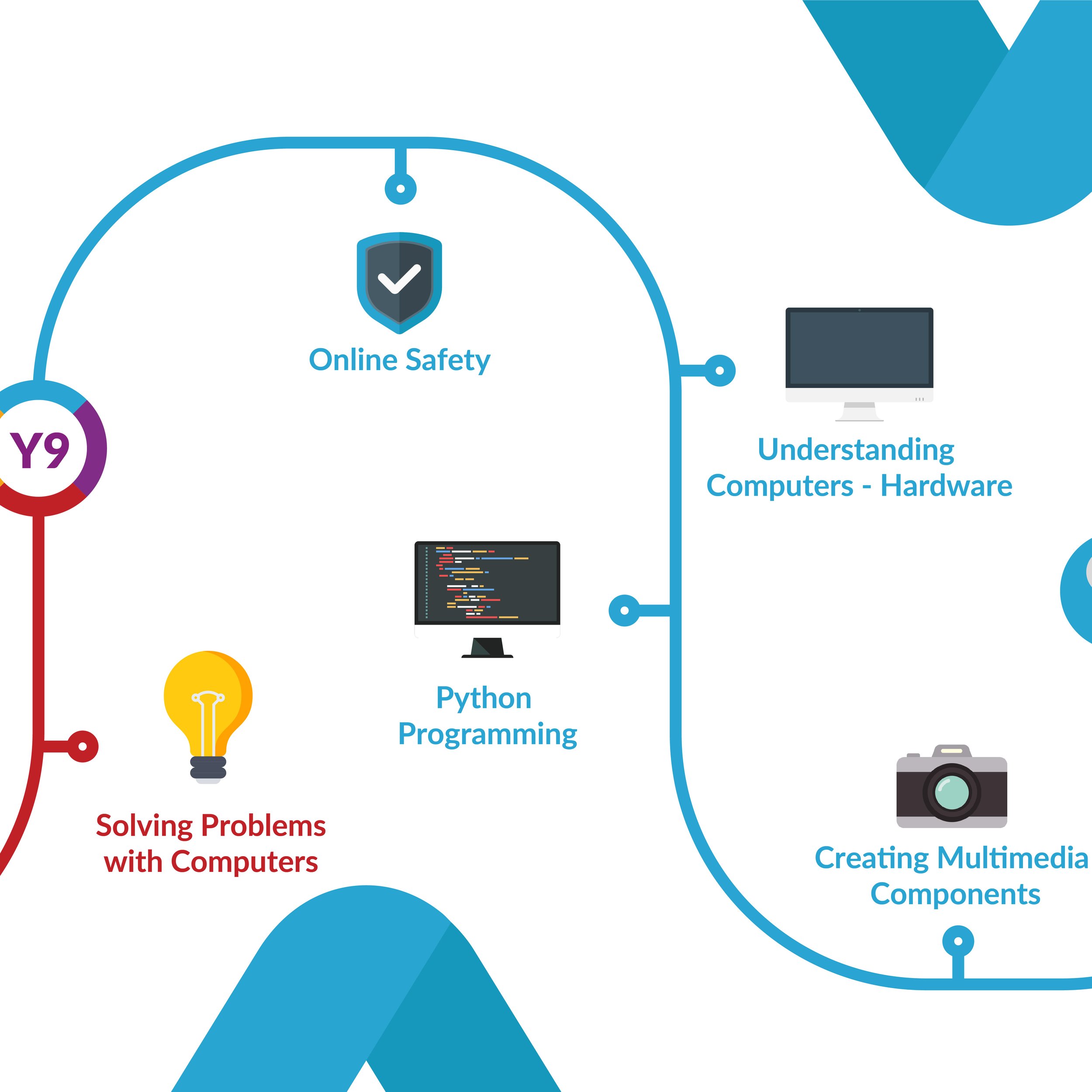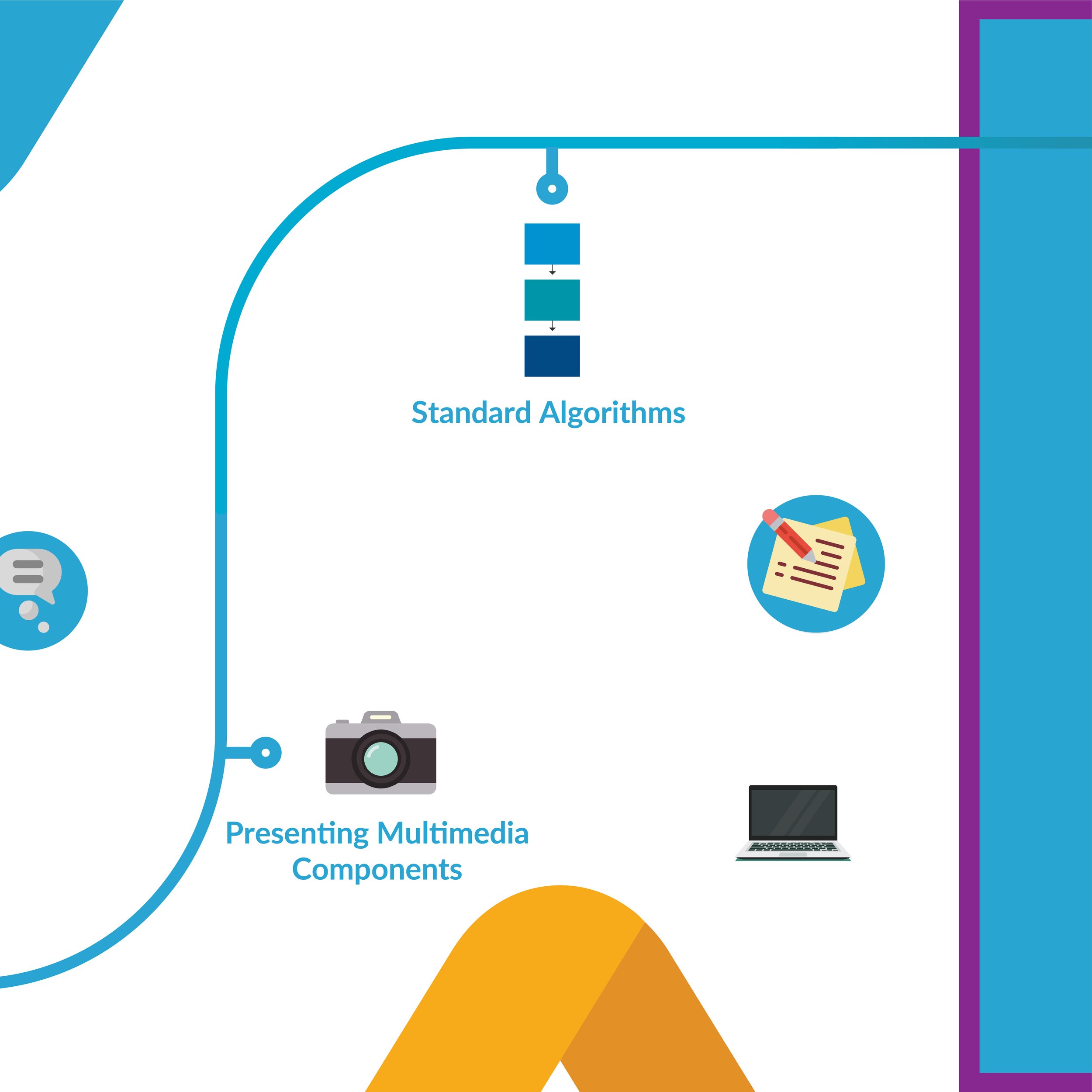
Computer Science
Year 7
Half Term 1
E-Safety
-
Pupils will learn a range of ways to use technology safely, respectfully, responsibly and securely, including protecting their online identity and privacy; recognise inappropriate content, contact and conduct and know how to report concerns.
-
The ideas pupils will understand and the words they will be able to use.
Digital Footprint, Cyber Bullying, Passwords & Email, Data Security, Virus, Social Media.
-
All resources for each lesson with be available on Teams for pupils to access from home.
Parents can support the learning by having an open discussion on e-safety and explaining the importance of staying safe online.
Parents can also encourage their children to complete the home learning activities to a high standard. -
Half Term 2
Understanding Computers
-
Pupils will learning about understanding the hardware and software components that make up computer systems, and how they communicate with one another and with other systems .
Pupils will also undertake creative projects that involve selecting, using, and combining multiple applications, preferably across a range of devices, to achieve challenging goals, including collecting and analysing data and meeting the needs of known users .
-
The ideas pupils will understand and the words they will be able to use.
Hardware, Software, Inputs, Outputs, Software, History of Computing
-
All resources for each lesson with be available on Teams for pupils to access from home.
Parents can support the learning by having an open discussion on the devices they have at home and understanding the features they possess.
Parents can also encourage their children to complete the home learning activities to a high standard which are either paper-based or electronic. -
Half Term 3
Programming
-
Pupils will learn a range of ways to design and create programmes thorough sequencing, selection and iteration.
They will use two or more programming languages, at least one of which is textual, to solve a variety of computational problems and make appropriate use of data structures design and develop modular programs that use procedures or functions. -
The ideas pupils will understand and the words they will be able to use.
Programming, sequencing, iteration, selection, variable, sprite, input, output.
-
All resources for each lesson with be available on Teams for pupils to access from home.
Parents can support the learning by encouraging students to access and experiment with Scratch online. Parents can also encourage their children to complete the home learning activities to a high standard. -
Half Term 4
Spreadsheets
-
In this unit, pupils will gain an understanding and knowledge of how to use spreadsheets to store and manipulate data, how to use common functions, and how to extract data to create visual representations using charts.
Pupils will use spreadsheets to track and calculate income, make predictions, and answer “what if…?” questions.
Pupils will gain some experience of spreadsheets and therefore know how to use cell references, fill colours, and borders, and become familiar with the basic functions, e.g., SUM, AVERAGE, MAX, and MIN. -
The ideas pupils will understand and the words they will be able to use.
Spreadsheet, Tabs, Format, SUM, MAX, AVERAGE, MIN, Charts, Graphs, Conditional formatting, Data validation, Formulae, Modelling, Cell referencing.
-
All resources for each lesson with be available on Teams for pupils to access from home. Parents can also encourage their children to complete the home learning activities to a high standard.
-
Half Term 5
Computational Thinking /Programming
-
Pupils use two or more programming languages, at least one of which is textual, to solve a variety of computational problems; make appropriate use of data structures [for example, lists, tables or arrays]; design and develop modular programs that use procedures or functions.
Pupils understand simple Boolean logic [for example, AND, OR and NOT] and some of its uses in circuits and programming; understand how numbers can be represented in binary, and be able to carry out simple operations on binary numbers.
-
The ideas pupils will understand and the words they will be able to use.
Microbit, Block Editor, Python Turtle , Arrays, Tables, Boolean Logic Gates, Binary, Function
-
All resources for each lesson with be available on Teams for pupils to access from home.
Parents can also encourage their children to complete the home learning activities to a high standard which are either paper-based or electronic. -
Half Term 6
Solving Problems with Computer Programs
-
Ordering food.
Shopping for clothes.
Asking for and giving directions as a tourist in Spain.
-
The ideas pupils will understand and the words they will be able to use:
Recall of vocabulary for food and drink.
Question words and how to form questions.
Recall of adjectival agreement.
Using intensifiers (too, very).
-
Questions and answers in French.
Languagenut assignments set every week for homework.
Testing the weekly words.
-





